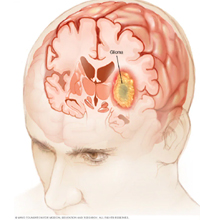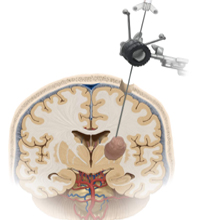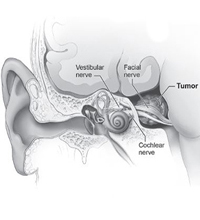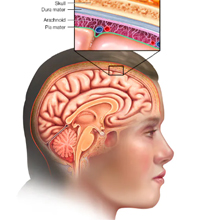
Brain Surgery
With a certified and highly experienced brain doctor in Delhi NCR, we cater to the specific needs of our patients and promise to help them recover in the best possible manner. Our motto is to provide them with appropriate treatment plans that will cure their illness and reduce the chances of any future relapse, especially when it comes to tumors.
Being one of the reputed hospitals for neurosurgeries, we ensure our treatment plans are curated based on the problems our patients encounter when they reach out to us seeking help. This way we can gain valuable insights into the root cause of their diseases and cure them properly through our advanced health plans.
Over the years, we have handled over 50 cases of complex neurosurgeries and acquired the highest success rate. So, if you are looking for the best brain surgery hospital in Delhi NCR, do not look any further and come to us.

Malignant Glioma
Considered as one of the primary brain tumors in adults, malignant gliomas are highly aggressive and invasive. These are categorized in several groups, including anaplastic oligodendrogliomas, anaplastic astrocytoma, and anaplastic oligoastrocytomas. Since these are highly progressive, symptoms include headache, physical weakness, seizures, memory loss, and loss of muscle control. Usually, the symptoms will depend on the part of the brain where the tumor affects the cells. Advanced treatment options are now available with the conjunction of molecular biomarkers to reduce the tumor growth and treat the affected areas.

Awake Craniotomy
As the name suggests, awake craniotomy is a type of surgery where the patient is completely conscious and able to talk, perceive stimuli, and even show movements in different body parts. It is mainly used to remove brain tumors that do not require highly invasive surgeries. Furthermore, if the tumor affects any motor function, doctors often prefer awake craniotomy to determine if removal of the tumor restores the original functions. One of the major benefits is the reduced chances of damage to essential brain tissues that control the speech and other important body functions.

Image Guided Neurosurgery
Although a new surgical approach, image-guide neurosurgeries are considered to have higher success rates than conventional processes. The detailed radiological images of the brain and spine parts displayed allow the doctors to exercise optimal precision in their surgeries. It further reduces the chances of nerve damage or suppression during the surgery, which is a common occurrence for most neurosurgeries. The images are primarily used to plan the surgical approach, assess the results during each phase of the neurosurgery, and prevent any impact on the healthy brain and spine tissues.

Frame Based and Frameless Stereotactic Brain Surgery
Often brain lesions cannot be diagnosed and treated with conventional surgical procedures. This is where the frame-based and frameless stereotactic brain surgeries come into the play. These involve minimal invasion into the brain to determine the exact location of the lesions and treat them on the go. In frame-based surgery, a rigid frame is attached to the skull to accurately position the biopsy needle while in frameless process, no such hard reference frame is used.

Endoscopic Brain Surgery
In endoscopic brain surgery, surgeons use a catheter tube with a camera at the tip to obtain video images during the entire surgical process. The video images provide a clear picture of the location of the tumor in the deep regions of the brain which otherwise won’t be easy to access through open craniotomy. Due to the high precision of the images, surgeons can locate and analyze the progress accurately without fail. Furthermore, they are also able to assess the brain using various pathways, including that of the nose and the sinuses.

Endoscopic Transnasal Pituitary Tumor Surgery
One of the most prominent forms of endoscopic brain surgery include trans nasal pituitary tumor surgery where the surgeon inserts the endoscope through the nasal opening to remove the tumor in the skull base or the pituitary gland. Some of the major tumors which are treated using this procedure include retro-infundibular tumor, suprasellar tumor, and pituitary apoplexy. The major benefits of using the endoscopic trans nasal pituitary tumor surgical process are reduced dependency on craniotomy, faster recovery time, and decreased damage to the healthy brain cells.

Pediatric Brain Tumor Surgery
In pediatric brain tumor surgeries, surgeons aim for the complete removal of the tumor from the affected region through craniotomy or other forms of minimally invasive procedures. In case the complete removal of the mass is not possible, surgeons prefer to do so through partial removals and reduce the impact on the healthier brain cells. A proper team of pediatric doctors are involved since the brain surgery might affect other body functions in the child. Therefore, proper planning and progress analysis are implemented to increase the success rate.

Skull Base Surgery
Skull base surgeries are usually performed to treat any condition that occurs in the underside of the brain, top vertebrae, and the skull base. These include pituitary tumors, congenital cysts, chordomas, craniosynostosis, and cerebral aneurysm. In skull base surgeries, surgeons can either opt for open craniotomy or endoscopic surgery based on the location of the cancerous or non-cancerous growth, accessibility, success rate, and recovery time. It is crucial for the surgeons to assess the challenges of the skull base surgery since it involves cutting open the primary location of the nerves that descend from the brain stem to continue through the spinal cord.

Vestibular Schwannoma
Also termed as acoustic neuroma, it is a non-cancerous or benign tumor growth in the vestibulocochlear nerve, connecting the inner ear with the brain. The most common cause for this tumor growth is abnormal functioning of the Schwann cells that form the insulting myelin sheath of nerve. The most common symptoms of vestibular schwannoma include facial numbness, headaches, confusion, clumsiness, feeling of fullness, vertigo, and difficulty in swallowing. Cyber knife radiosurgery and surgical removal are the two most common treatment procedures most surgeon prefer.

Meningioma
Meningiomas is the most common form of tumor that grows in the meninges or the protective membranes surrounding the brain and the spinal cord. Usually, the swelling affects the surrounding tissues as it continues to put excessive pressure, especially on the nerves. Symptoms of meningiomas often include headaches, loss of motor balance, weakness in the limbs, blurred vision, seizures, and loss of hearing and memory. Usually, the condition is treatable through open surgeries and in case accessing the affected site is difficult, radiosurgery is also used.


